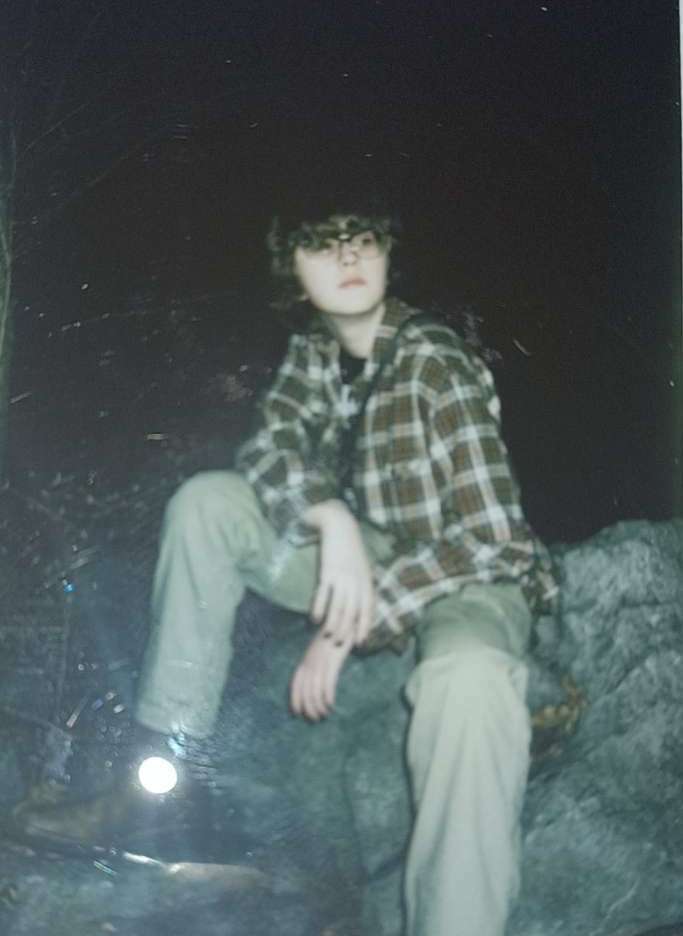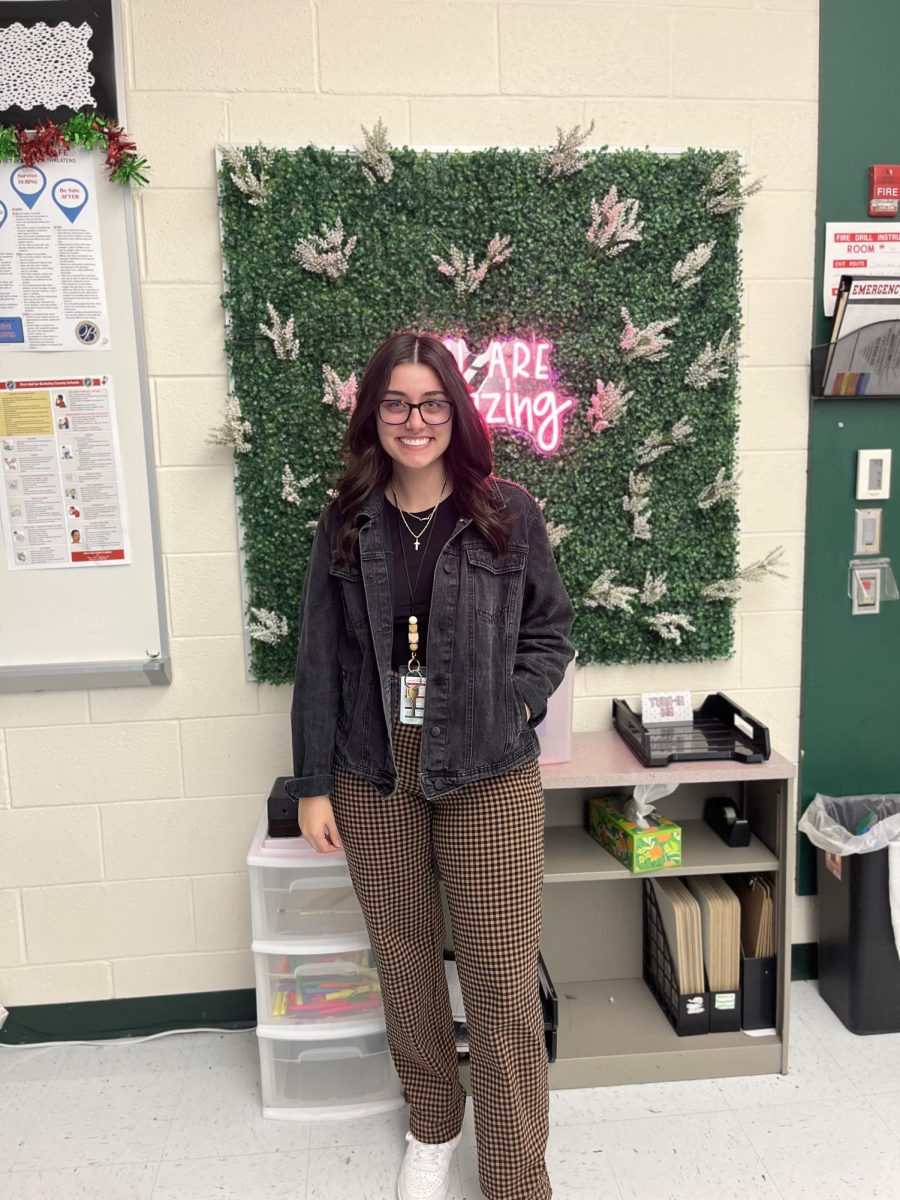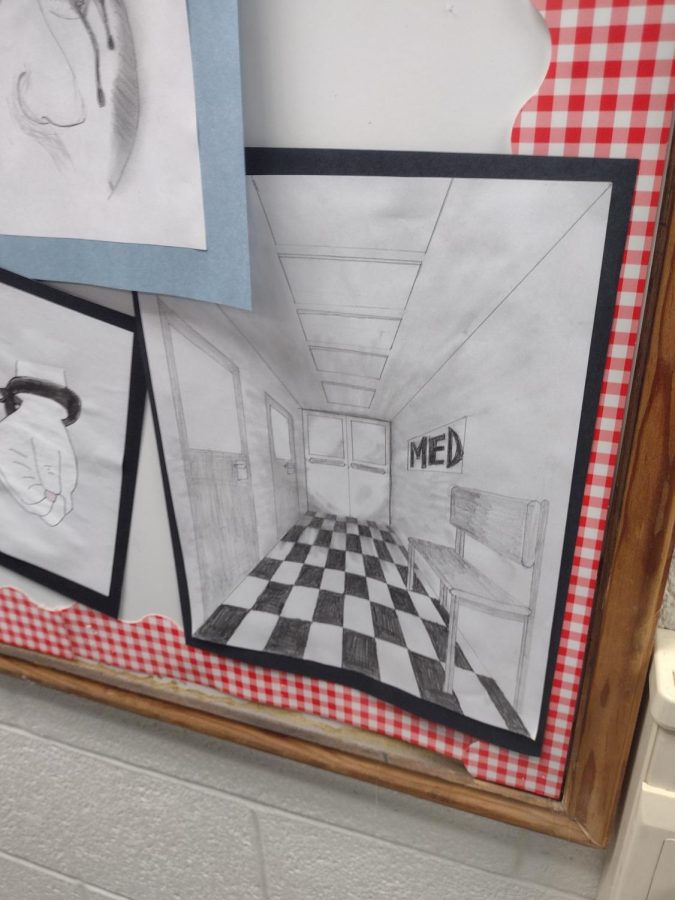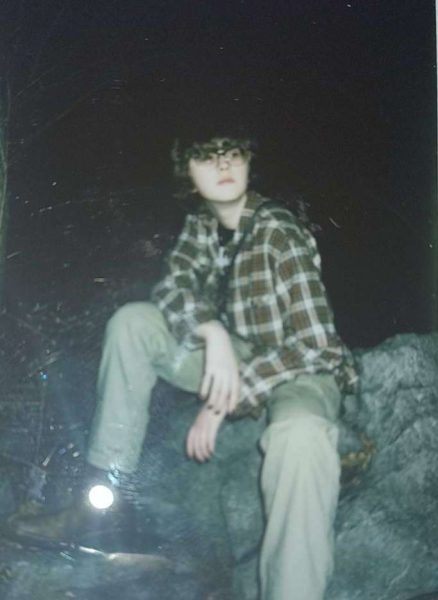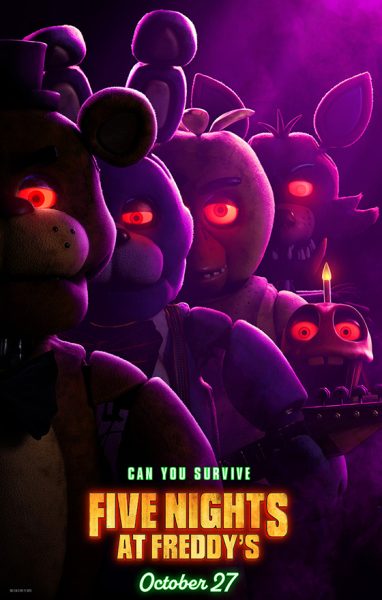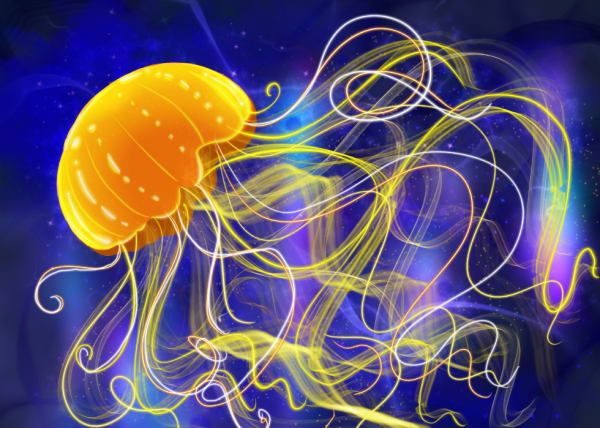Styles of Drawing: Realism
MuHS student artwork in Mrs. Shirley’s art class depicting realism.
April 1, 2022
Something that every artist aims for at one point in their life is realism – putting a little bit of reality on a piece of paper. Oftentimes, a pencil is the only thing used, leaving the drawing in shades of black and white. When colored pencils are used by the artist, they are best used without a standard graphite pencil, adding a whole new dimension of challenge to a proper drawing – being unable to fully erase. It’s considered an impressive style for good reason.
The biggest turn-away for many aspiring realism artists is the sheer difficulty of the style. However, there are a few tricks to help you learn and grow.
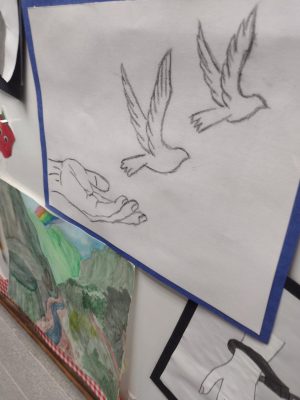
First, you have to practice. You won’t be very good at drawing something if you avoid trying to. While hands and feet are a pain to do, it does get easier to draw them with practice. Use photos as references, and start with regular pencils – mechanical, wooden, it doesn’t matter the kind. For texture and light, shading gently with repeating patterns (swirls, dots, lines) helps. Shading is typically done with a wooden pencil, since the duller tip makes it less dark and much softer. As you grow more experienced, start attempting to draw things you’re familiar with in colored pencil. Do your best to avoid mixing colored pencils and regular graphite. Mixing them tends to lessen the realistic factor, even if the pencil is used for shading.
Try and keep your subject matter local – use a pet, a building, or a really cool plant in your area. You can move as needed. If you have to stop, try to continue the drawing at a time with similar light. It will keep your drawing more realistic and the light smooth. If your object of choice is made to look like it is resting on the paper, don’t forget the shadow on the paper as well – or the item itself!
If something large-scale is not your style, you have plenty of options on the smaller side – eyes, flowers, and bugs are great examples of this. Don’t be afraid to explore your surroundings for ideas, either. If you really like that rock, take it home!








